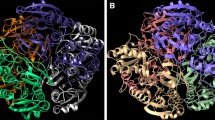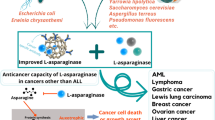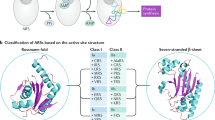Abstract
Purpose
The benefits of asparaginase (ASNASE) in the treatment of ALL and NHL are indisputable and new ASNASE preparations are under clinical development to overcome limitations of the actual ASNASE therapy, especially immunogenicity. Apart from ALL and NHL further indications of ASNASE are preclinically and clinically evaluated.
Methods
We reviewed ASNASE literature and especially focused on the mechanism of action, on biomarker, which determine ASNASE sensitivity and resistance, and on ASNASE pharmacodynamics in vivo.
Results
More than 40 years after the clinical introduction of ASNASE its mechanism of action is yet not fully understood. Studies on asparagine synthetase (ASNS) as biomarker for ASNASE resistance are contradictory and complicated by methodological obstacles. The role of glutamine hydrolysis for ASNASE efficacy is still debated, other mechanisms are possibly not yet identified. In addition, individual pharmacokinetic/-dynamic relationships cannot be properly addressed because of methodological limitations.
Conclusion
More sophisticated preclinical models and suitable methods for monitoring of ASNASE pharmacodynamics are urgently needed (1) to understand the mechanism of action, (2) to establish valid biomarkers for ASNASE sensitivity and resistance, (3) to evaluate the pharmacokinetics/-dynamics of ASNASEs in individual patients, and (4) to compare the bioequivalence of clinically established, as well as new ASNASE preparations.


Similar content being viewed by others
References
Kidd JG (1953) Regression of transplanted lymphomas induced in vivo by means of normal guinea pig serum. I. Course of transplanted cancers of various kinds in mice and rats given guinea pig serum, horse serum, or rabbit serum. J Exp Med 98(6):565–582
Broome JD (1963) Evidence that the l-asparaginase of guinea pig serum is responsible for its antilymphoma effects. I. Properties of the l-asparaginase of guinea pig serum in relation to those of the antilymphoma substance. J Exp Med 118:99–120
Krishnapura PR, Belur PD, Subramanya S (2016) A critical review on properties and applications of microbial l-asparaginases. Crit Rev Microbiol 42(5):720–737. doi:10.3109/1040841X.2015.1022505
Roth G, Nunes JES, Rosado LA et al (2013) Recombinant Erwinia carotovora l-asparaginase II production in Escherichia coli fed-batch cultures. Braz J Chem Eng 30(2):245–256
Elspar (asparaginase)—FDA. http://www.accessdata.fda.gov/drugsatfda_docs/label/2013/101063s5169lbl.pdf. Accessed 29 Sept 2016
ERWINAZE—U.S. Food and Drug Administration. https://www.accessdata.fda.gov/drugsatfda_docs/label/2011/125359lbl.pdf. Accessed 29 Sept 2016
Oncaspar (pegaspargase) injection Label—FDA. http://www.accessdata.fda.gov/drugsatfda_docs/label/2011/103411s5126lbl.pdf. Accessed 29 Sept 2016
Dinndorf PA, Gootenberg J, Cohen MH et al (2007) FDA drug approval summary: pegaspargase (oncaspar) for the first-line treatment of children with acute lymphoblastic leukemia (ALL). Oncologist 12(8):991–998. doi:10.1634/theoncologist.12-8-991
Bleyer A, Asselin BL, Koontz SE et al (2015) Clinical application of asparaginase activity levels following treatment with pegaspargase. Pediatr Blood Cancer 62(6):1102–1105. doi:10.1002/pbc.25299
Spectrila—European Medicines Agency—Europa.eu. http://ec.europa.eu/health/documents/community-register/2016/20160114133746/anx_133746_de.pdf. Accessed 29 Sept 2016
Sutow WW, Garcia F, Starling KA et al (1971) L-asparaginase therapy in children with advanced leukemia. The Southwest Cancer Chemotherapy Study Group. Cancer 28(4):819–824
Tallal L, Tan C, Oettgen H et al (1970) E. coli L-asparaginase in the treatment of leukemia and solid tumors in 131 children. Cancer 25(2):306–320
Egler RA, Ahuja SP, Matloub Y (2016) L-asparaginase in the treatment of patients with acute lymphoblastic leukemia. J Pharmacol Pharmacother 7(2):62–71. doi:10.4103/0976-500X.184769
Pieters R, Hunger SP, Boos J et al (2011) L-asparaginase treatment in acute lymphoblastic leukemia: a focus on Erwinia asparaginase. Cancer 117(2):238–249. doi:10.1002/cncr.25489
Prager MD, Bachynsky N (1968) Asparagine synthetase in normal and malignant tissues: correlation with tumor sensitivity to asparaginase. Arch Biochem Biophys 127(1):645–654
Lazarus H, McCoy TA, Farber S et al (1969) Nutritional requirements of human leukemic cells. Asparagine requirements and the effect of l-asparaginase. Exp Cell Res 57(1):134–138
Aslanian AM, Kilberg MS (2001) Multiple adaptive mechanisms affect asparagine synthetase substrate availability in asparaginase-resistant MOLT-4 human leukaemia cells. Biochem J 358(Pt 1):59–67
Scherf U, Ross DT, Waltham M et al (2000) A gene expression database for the molecular pharmacology of cancer. Nat Genet 24(3):236–244. doi:10.1038/73439
Holleman A, Cheok MH, den Boer ML et al (2004) Gene-expression patterns in drug-resistant acute lymphoblastic leukemia cells and response to treatment. N Engl J Med 351(6):533–542. doi:10.1056/NEJMoa033513
Fine BM, Kaspers GJL, Ho M et al (2005) A genome-wide view of the in vitro response to l-asparaginase in acute lymphoblastic leukemia. Cancer Res 65(1):291–299
Stams WAG, den Boer ML, Beverloo HB et al (2003) Sensitivity to l-asparaginase is not associated with expression levels of asparagine synthetase in t(12;21) + pediatric ALL. Blood 101(7):2743–2747. doi:10.1182/blood-2002-08-2446
Ramakers-van Woerden NL, Pieters R, Loonen AH et al (2000) TEL/AML1 gene fusion is related to in vitro drug sensitivity for l-asparaginase in childhood acute lymphoblastic leukemia. Blood 96(3):1094–1099
Hermanova I, Zaliova M, Trka J et al (2012) Low expression of asparagine synthetase in lymphoid blasts precludes its role in sensitivity to l-asparaginase. Exp Hematol 40(8):657–665. doi:10.1016/j.exphem.2012.04.005
Su N, Pan Y-X, Zhou M et al (2008) Correlation between asparaginase sensitivity and asparagine synthetase protein content, but not mRNA, in acute lymphoblastic leukemia cell lines. Pediatr Blood Cancer 50(2):274–279. doi:10.1002/pbc.21213
Greco A, Ittmann M, Basilico C (1987) Molecular cloning of a gene that is necessary for G1 progression in mammalian cells. Proc Natl Acad Sci U S A 84(6):1565–1569
Morgan KT, Casey W, Easton M et al (2003) Frequent sampling reveals dynamic responses by the transcriptome to routine media replacement in HepG2 cells. Toxicol Pathol 31(4):448–461
Ye J, Kumanova M, Hart LS et al (2010) The GCN2-ATF4 pathway is critical for tumour cell survival and proliferation in response to nutrient deprivation. EMBO J 29(12):2082–2096. doi:10.1038/emboj.2010.81
Chen H, Pan Y-X, Dudenhausen EE et al (2004) Amino acid deprivation induces the transcription rate of the human asparagine synthetase gene through a timed program of expression and promoter binding of nutrient-responsive basic region/leucine zipper transcription factors as well as localized histone acetylation. J Biol Chem 279(49):50829–50839. doi:10.1074/jbc.M409173200
Gong SS, Guerrini L, Basilico C (1991) Regulation of asparagine synthetase gene expression by amino acid starvation. Mol Cell Biol 11(12):6059–6066
Hutson RG, Kitoh T, Moraga Amador DA et al (1997) Amino acid control of asparagine synthetase: relation to asparaginase resistance in human leukemia cells. Am J Physiol 272(5 Pt 1):C1691–C1699
Barbosa-Tessmann IP, Chen C, Zhong C et al (2000) Activation of the human asparagine synthetase gene by the amino acid response and the endoplasmic reticulum stress response pathways occurs by common genomic elements. J Biol Chem 275(35):26976–26985. doi:10.1074/jbc.M000004200
Hongo S, Takeda M, Sato T (1989) Induction of asparagine synthetase during lymphocyte activation by phytohemagglutinin. Biochem Int 18(3):661–666
Balasubramanian MN, Butterworth EA, Kilberg MS (2013) Asparagine synthetase: regulation by cell stress and involvement in tumor biology. Am J Physiol Endocrinol Metab 304(8):E789–E799. doi:10.1152/ajpendo.00015.2013
Ren Y, Roy S, Ding Y et al (2004) Methylation of the asparagine synthetase promoter in human leukemic cell lines is associated with a specific methyl binding protein. Oncogene 23(22):3953–3961. doi:10.1038/sj.onc.1207498
Ding Y, Li Z, BROOME JD (2005) Epigenetic changes in the repression and induction of asparagine synthetase in human leukemic cell lines. Leukemia 19(3):420–426. doi:10.1038/sj.leu.2403639
Aslanian AM, Fletcher BS, Kilberg MS (2001) Asparagine synthetase expression alone is sufficient to induce l-asparaginase resistance in MOLT-4 human leukaemia cells. Biochem J 357(Pt 1):321–328
Appel IM, den Boer ML, Meijerink JPP et al (2006) Up-regulation of asparagine synthetase expression is not linked to the clinical response l-asparaginase in pediatric acute lymphoblastic leukemia. Blood 107(11):4244–4249. doi:10.1182/blood-2005-06-2597
Dubbers A, Wurthwein G, Muller HJ et al (2000) Asparagine synthetase activity in paediatric acute leukaemias: AML-M5 subtype shows lowest activity. Br J Haematol 109(2):427–429
Wagner A, Boos J (1998) Unphysiological effects contributing to asparaginase toxicity in vitro. Am J Physiol 274(4 Pt 1):C1185–C1186
Fumarola C, Zerbini A, Guidotti GG (2001) Glutamine deprivation-mediated cell shrinkage induces ligand-independent CD95 receptor signaling and apoptosis. Cell Death Differ 8(10):1004–1013. doi:10.1038/sj.cdd.4400902
Iwamoto S, Mihara K, Downing JR et al (2007) Mesenchymal cells regulate the response of acute lymphoblastic leukemia cells to asparaginase. J Clin Invest 117(4):1049–1057. doi:10.1172/JCI30235
Tong WH, Pieters R, Hop WCJ et al (2013) Asparagine levels in the bone marrow of patients with acute lymphoblastic leukemia during asparaginase therapy. Pediatr Blood Cancer 60(11):1914. doi:10.1002/pbc.24661
Yu M, Henning R, Walker A et al (2012) l-asparaginase inhibits invasive and angiogenic activity and induces autophagy in ovarian cancer. J Cell Mol Med 16(10):2369–2378. doi:10.1111/j.1582-4934.2012.01547.x
Kessel D, Bosmann HB (1972) l-asparaginase effects on intact murine leukemia cells and on isolated cell plasma membranes. Biochem Biophys Res Commun 48(1):35–40
Boos J, Werber G, Ahlke E et al (1996) Monitoring of asparaginase activity and asparagine levels in children on different asparaginase preparations. Eur J Cancer 32 A(9): 1544–1550
Tong WH, Pieters R, Kaspers GJL et al (2014) A prospective study on drug monitoring of PEGasparaginase and Erwinia asparaginase and asparaginase antibodies in pediatric acute lymphoblastic leukemia. Blood 123(13):2026–2033. doi:10.1182/blood-2013-10-534347
Jarrar M, Gaynon PS, Periclou AP et al (2006) Asparagine depletion after pegylated E. coli asparaginase treatment and induction outcome in children with acute lymphoblastic leukemia in first bone marrow relapse: a children’s oncology group study (CCG-1941). Pediatr Blood Cancer 47(2):141–146. doi:10.1002/pbc.20713
Roberts J, Holcenberg JS, Dolowy WC (1970) Antineoplastic activity of highly purified bacterial glutaminases. Nature 227(5263):1136–1137
Warrell RP JR, Chou TC, Gordon C et al (1980) Phase I evaluation of succinylated acinetobacter glutaminase-asparaginase in adults. Cancer Res 40(12):4546–4551
Chan WK, Lorenzi PL, Anishkin A et al (2014) The glutaminase activity of l-asparaginase is not required for anticancer activity against ASNS-negative cells. Blood 123(23):3596–3606. doi:10.1182/blood-2013-10-535112
Willems L, Jacque N, Jacquel A et al (2013) Inhibiting glutamine uptake represents an attractive new strategy for treating acute myeloid leukemia. Blood 122(20):3521–3532. doi:10.1182/blood-2013-03-493163
Parmentier JH, Maggi M, Tarasco E et al (2015) Glutaminase activity determines cytotoxicity of l-asparaginases on most leukemia cell lines. Leuk Res 39(7):757–762. doi:10.1016/j.leukres.2015.04.008
Wagner A, Hempel G, Gumbinger HG et al (1999) Pharmacokinetics of anticancer drugs in vitro. Adv Exp Med Biol 457:397–407
Ollenschlager G, Roth E, Linkesch W et al (1988) Asparaginase-induced derangements of glutamine metabolism: the pathogenetic basis for some drug-related side-effects. Eur J Clin Invest 18(5):512–516
Raetz EA, Salzer WL (2010) Tolerability and efficacy of l-asparaginase therapy in pediatric patients with acute lymphoblastic leukemia. J Pediatr Hematol Oncol 32(7):554–563. doi:10.1097/MPH.0b013e3181e6f003
van der Sluis, Inge M, Vrooman LM, Pieters R et al (2016) Consensus expert recommendations for identification and management of asparaginase hypersensitivity and silent inactivation. Haematologica 101(3):279–285. doi:10.3324/haematol.2015.137380
Beaupin LK, Bostrom B, Barth MJ et al (2016) Pegaspargase hypersensitivity reactions: intravenous infusion versus intramuscular injection—a review. Leuk Lymphoma: 1–7. doi:10.1080/10428194.2016.1218004
Kloos RQH, Pieters R, Escherich G et al (2016) Allergic-like reactions to asparaginase: Atypical allergies without asparaginase inactivation. Pediatr Blood Cancer. doi:10.1002/pbc.26123
Tong WH, Pieters R, Tissing WJE et al (2014) Desensitization protocol should not be used in acute lymphoblastic leukemia patients with silent inactivation of PEGasparaginase. Haematologica 99(7):e102–e104. doi:10.3324/haematol.2013.099663
Liu C, Kawedia JD, Cheng C et al (2012) Clinical utility and implications of asparaginase antibodies in acute lymphoblastic leukemia. Leukemia 26(11):2303–2309. doi:10.1038/leu.2012.102
Wang B, Relling MV, Storm MC et al (2003) Evaluation of immunologic crossreaction of antiasparaginase antibodies in acute lymphoblastic leukemia (ALL) and lymphoma patients. Leukemia 17(8):1583–1588. doi:10.1038/sj.leu.2403011
Zalewska-Szewczyk B, Gach A, Wyka K et al (2009) The cross-reactivity of anti-asparaginase antibodies against different l-asparaginase preparations. Clin Exp Med 9(2):113–116. doi:10.1007/s10238-008-0026-9
Avramis VI, Sencer S, Periclou AP et al (2002) A randomized comparison of native Escherichia coli asparaginase and polyethylene glycol conjugated asparaginase for treatment of children with newly diagnosed standard-risk acute lymphoblastic leukemia: a Children’s Cancer Group study. Blood 99(6):1986–1994
Schrey D, Borghorst S, Lanvers-Kaminsky C et al (2010) Therapeutic drug monitoring of asparaginase in the ALL-BFM 2000 protocol between 2000 and 2007. Pediatr Blood Cancer 54(7):952–958. doi:10.1002/pbc.22417
Willer A, Gerss J, Konig T et al (2011) Anti-Escherichia coli asparaginase antibody levels determine the activity of second-line treatment with pegylated E coli asparaginase: a retrospective analysis within the ALL-BFM trials. Blood 118(22):5774–5782. doi:10.1182/blood-2011-07-367904
Panosyan EH, Seibel NL, Martin-Aragon S et al (2004) Asparaginase antibody and asparaginase activity in children with higher-risk acute lymphoblastic leukemia: Children’s Cancer Group Study CCG-1961. J Pediatr Hematol Oncol 26(4):217–226
Woo MH, Hak LJ, Storm MC et al (2000) Hypersensitivity or development of antibodies to asparaginase does not impact treatment outcome of childhood acute lymphoblastic leukemia. J Clin Oncol 18(7):1525–1532
Vrooman LM, Stevenson KE, Supko JG et al (2013) Postinduction dexamethasone and individualized dosing of Escherichia Coli l-asparaginase each improve outcome of children and adolescents with newly diagnosed acute lymphoblastic leukemia: results from a randomized study—Dana-Farber Cancer Institute ALL Consortium Protocol 00-01. J Clin Oncol 31(9):1202–1210. doi:10.1200/JCO.2012.43.2070
Szebeni J (2005) Complement activation-related pseudoallergy: a new class of drug-induced acute immune toxicity. Toxicology 216(2–3):106–121. doi:10.1016/j.tox.2005.07.023
Garay RP, El-Gewely R, Armstrong JK et al (2012) Antibodies against polyethylene glycol in healthy subjects and in patients treated with PEG-conjugated agents. Expert Opin Drug Deliv 9(11):1319–1323. doi:10.1517/17425247.2012.720969
Armstrong JK, Hempel G, Koling S et al (2007) Antibody against poly(ethylene glycol) adversely affects PEG-asparaginase therapy in acute lymphoblastic leukemia patients. Cancer 110(1):103–111. doi:10.1002/cncr.22739
Fernandez CA, Stewart E, Panetta JC et al (2014) Successful challenges using native E. coli asparaginase after hypersensitivity reactions to PEGylated E. coli asparaginase. Cancer Chemother Pharmacol 73(6):1307–1313. doi:10.1007/s00280-014-2464-2
Abu Lila AS, Kiwada H, Ishida T (2013) The accelerated blood clearance (ABC) phenomenon: clinical challenge and approaches to manage. J Control Release 172(1):38–47. doi:10.1016/j.jconrel.2013.07.026
Poppenborg SM, Wittmann J, Walther W et al (2016) Impact of anti-PEG IgM antibodies on the pharmacokinetics of pegylated asparaginase preparations in mice. Eur J Pharm Sci 91:122–130. doi:10.1016/j.ejps.2016.06.007
Asselin BL (1999) The three asparaginases. Comparative pharmacology and optimal use in childhood leukemia. Adv Exp Med Biol 457:621–629
Ahlke E, Nowak-Gottl U, Schulze-Westhoff P et al (1997) Dose reduction of asparaginase under pharmacokinetic and pharmacodynamic control during induction therapy in children with acute lymphoblastic leukaemia. Br J Haematol 96(4):675–681
Vieira Pinheiro JP, Ahlke E, Nowak-Gottl U et al (1999) Pharmacokinetic dose adjustment of Erwinia asparaginase in protocol II of the paediatric ALL/NHL-BFM treatment protocols. Br J Haematol 104(2):313–320
Riccardi R, Holcenberg JS, Glaubiger DL et al (1981) l-asparaginase pharmacokinetics and asparagine levels in cerebrospinal fluid of rhesus monkeys and humans. Cancer Res 41(11 Pt 1):4554–4558
Lanvers-Kaminsky C, Westhoff PS, D’Incalci M et al (2014) Immediate cooling does not prevent the ex vivo hydrolysis of l-asparagine by asparaginase. Ther Drug Monit 36(4):549–552. doi:10.1097/FTD.0000000000000030
Asselin BL, Lorenson MY, Whitin JC et al (1991) Measurement of serum l-asparagine in the presence of l-asparaginase requires the presence of an l-asparaginase inhibitor. Cancer Res 51(24):6568–6573
Gentili D, Zucchetti M, Conter V et al (1994) Determination of l-asparagine in biological samples in the presence of l-asparaginase. J Chromatogr B Biomed Appl 657(1):47–52
Vieira Pinheiro JP, Wenner K, Escherich G et al (2006) Serum asparaginase activities and asparagine concentrations in the cerebrospinal fluid after a single infusion of 2,500 IU/m(2) PEG asparaginase in children with ALL treated according to protocol COALL-06-97. Pediatr Blood Cancer 46(1):18–25. doi:10.1002/pbc.20406
Henriksen LT, Nersting J, Raja RA et al (2014) Cerebrospinal fluid asparagine depletion during pegylated asparaginase therapy in children with acute lymphoblastic leukaemia. Br J Haematol 166(2):213–220. doi:10.1111/bjh.12865
Werber G, Ahlke E, Nowak-Gottl U et al. Asparaginase activities in vitro are highly sensitive to different buffer conditions. In: Acute Leukemias VI Prognostic factors and treatment strategies, VI, pp 512–516
van der Meer, Laurens T, Terry SYA, van Ingen Schenau D et al (2016) In vivo imaging of antileukemic drug asparaginase reveals a rapid macrophage mediated clearance from the bone marrow. J Nucl Med. doi:10.2967/jnumed.116.177741
van der Meer, Laurens T, Waanders E, Levers M et al (2014) A germ line mutation in cathepsin B points toward a role in asparaginase pharmacokinetics. Blood 124(19):3027–3029. doi:10.1182/blood-2014-06-582627
Patel N, Krishnan S, Offman MN et al (2009) A dyad of lymphoblastic lysosomal cysteine proteases degrades the antileukemic drug l-asparaginase. J Clin Invest 119(7):1964–1973. doi:10.1172/JCI37977
Wang L, Chen S, Zhang M et al (2012) Legumain: a biomarker for diagnosis and prognosis of human ovarian cancer. J Cell Biochem 113(8):2679–2686. doi:10.1002/jcb.24143
Ahmed T, Holwerda S, Klepin HD et al (2015) High dose cytarabine, mitoxantrone and l-asparaginase (HAMA) salvage for relapsed or refractory acute myeloid leukemia (AML) in the elderly. Leuk Res 39(9):945–949. doi:10.1016/j.leukres.2015.05.010
Lorenzi PL, Reinhold WC, Rudelius M et al (2006) Asparagine synthetase as a causal, predictive biomarker for l-asparaginase activity in ovarian cancer cells. Mol Cancer Ther 5(11):2613–2623. doi:10.1158/1535-7163.MCT-06-0447
Hays JL, Kim G, Walker A et al (2013) A phase II clinical trial of polyethylene glycol-conjugated l-asparaginase in patients with advanced ovarian cancer: early closure for safety. Mol Clin Oncol 1(3):565–569. doi:10.3892/mco.2013.99
Agrawal NR, Bukowski RM, Rybicki LA et al (2003) A Phase I-II trial of polyethylene glycol-conjugated l-asparaginase in patients with multiple myeloma. Cancer 98(1):94–99. doi:10.1002/cncr.11480
Bachet J-B, Gay F, Marechal R et al (2015) Asparagine synthetase expression and phase I study with l-asparaginase encapsulated in red blood cells in patients with pancreatic adenocarcinoma. Pancreas 44(7):1141–1147. doi:10.1097/MPA.0000000000000394
Angiolillo AL, Schore RJ, Devidas M et al (2014) Pharmacokinetic and pharmacodynamic properties of calaspargase pegol Escherichia coli l-asparaginase in the treatment of patients with acute lymphoblastic leukemia: results from Children’s Oncology Group Study AALL07P4. J Clin Oncol 32(34):3874–3882. doi:10.1200/JCO.2014.55.5763
Wileman TE, Foster RL, Elliott PN (1986) Soluble asparaginase-dextran conjugates show increased circulatory persistence and lowered antigen reactivity. J Pharm Pharmacol 38(4):264–271
Domenech C, Thomas X, Chabaud S et al (2011) l-asparaginase loaded red blood cells in refractory or relapsing acute lymphoblastic leukaemia in children and adults: results of the GRASPALL 2005-01 randomized trial. Br J Haematol 153(1):58–65. doi:10.1111/j.1365-2141.2011.08588.x
Husain I, Sharma A, Kumar S et al (2016) Purification and characterization of glutaminase free asparaginase from Pseudomonas otitidis: induce apoptosis in human leukemia MOLT-4 cells. Biochimie 121:38–51. doi:10.1016/j.biochi.2015.11.012
Meena B, Anburajan L, Vinithkumar NV et al (2016) Molecular expression of l-asparaginase gene from Nocardiopsis alba NIOT-VKMA08 in Escherichia coli: A prospective recombinant enzyme for leukaemia chemotherapy. Gene 590(2):220–226. doi:10.1016/j.gene.2016.05.003
Offman MN, Krol M, Patel N et al (2011) Rational engineering of l-asparaginase reveals importance of dual activity for cancer cell toxicity. Blood 117(5):1614–1621. doi:10.1182/blood-2010-07-298422
Sannikova EP, Bulushova NV, Cheperegin SE et al (2016) The modified heparin-binding l-asparaginase of wolinella succinogenes. Mol Biotechnol 58(8–9):528–539. doi:10.1007/s12033-016-9950-1
Author information
Authors and Affiliations
Corresponding author
Rights and permissions
About this article
Cite this article
Lanvers-Kaminsky, C. Asparaginase pharmacology: challenges still to be faced. Cancer Chemother Pharmacol 79, 439–450 (2017). https://doi.org/10.1007/s00280-016-3236-y
Received:
Accepted:
Published:
Issue Date:
DOI: https://doi.org/10.1007/s00280-016-3236-y




